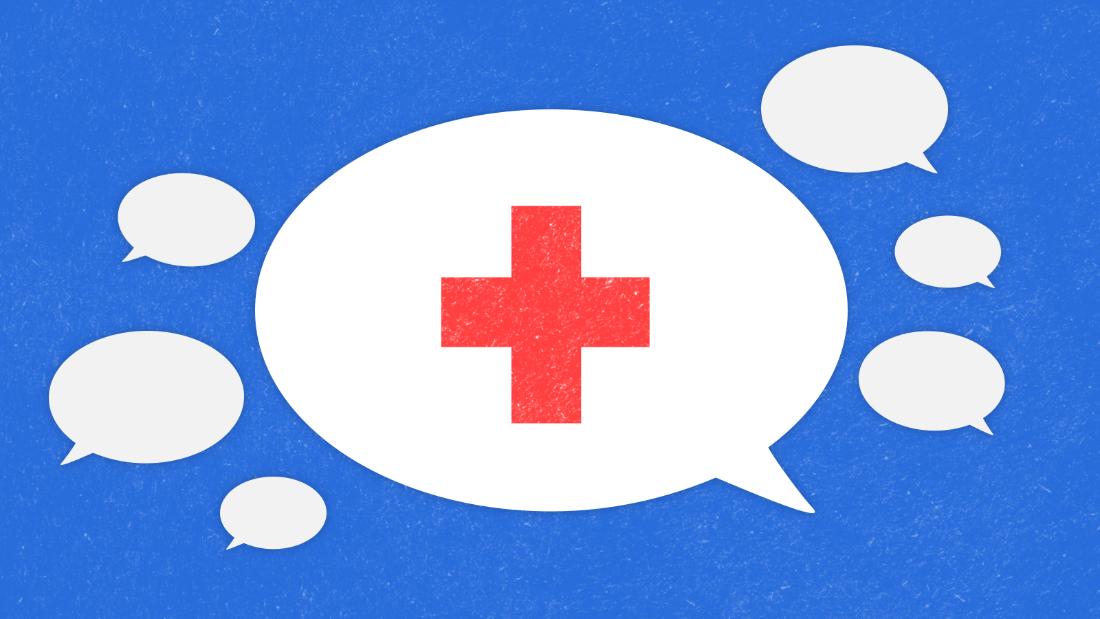
Many Americans say they are satisfied with their health care coverage, but it's pretty pricey. And the US is the only wealthy developed nation not to guarantee health care to all. Roughly one in 10 Americans is uninsured, but many more struggle to pay their medical bills.
Here's a guide to what the debate is all about:
Medicare for All: This proposal, spearheaded by Vermont Sen. Bernie Sanders, would radically change the way Americans are covered, shifting control to the federal government and essentially eliminating the private insurance industry.
Under Sanders' plan, Americans would be enrolled in a national health insurance program, also known as a "single-payer" system, which many other developed countries have. The federal government would run the program, and it -- and taxpayers -- would pay the bills.
Medically necessary services would be covered and there would be no premiums, deductibles or co-pays. It would expand the current Medicare benefit package to include vision, dental, hearing and long-term care at home or in the community. Nursing home and other institutional services would be covered under Medicaid.
Private insurers aren't banned, but they can't sell policies that cover benefits provided by the federal plan. That leaves them with a very niche market -- covering elective services, such as cosmetic surgery.
Public option: More moderate candidates are pushing for a so-called public option, which is a government-backed insurance plan.
While a public option can take several forms, several contenders would add such a plan to the Affordable Care Act exchanges.
Theoretically, the public option should be more affordable for consumers because the government could use its heft to negotiate lower rates with doctors and hospitals and to reduce costs. How effective it would be depends on how it's set up, and most candidates haven't delved into the nitty gritty details.
Some seeking the nomination see a public option as an initial step towards a Medicare for All-type overhaul. But others say the best way to extend coverage to more Americans is to offer a public plan and also increase federal subsidies for Affordable Care Act policies.
Affordable Care Act: This is Obamacare, and it affects all Americans' health care today. Passed in 2010, the landmark law made sweeping changes to the nation's health care system. Some of its more notable provisions included creating the individual insurance market exchanges and expanding Medicaid to more lower-income Americans, both of which began in 2014.
Some 11.4 million people signed up for 2019 policies on the exchanges, and 12.7 million folks are covered by Medicaid expansion.
The law allowed children to stay on their parents' policies until the age of 26. And it barred insurers from denying coverage or charging higher rates to consumers based pre-existing protections. Insurers must also provide comprehensive benefits, including prescription drugs, maternity and mental health.
Employer-sponsored insurance: Roughly half of Americans -- or more than 150 million people -- get their health insurance through their jobs today.
Three-quarters of the public have favorable views of work-based coverage, according to a new poll by the Kaiser Family Foundation. Of those with such plans, 86% rate their coverage as either "excellent" or "good."
But these policies have become much more expensive in recent years. Annual premiums for a family plan cost almost $20,000, on average, last year, with workers contributing about $5,550 and employers paying the rest, according to another Kaiser survey.
Since 2008, average family premiums have increased 55%, twice as fast as workers' earnings and three times as fast as inflation, according to Kaiser.
Deductibles have also risen swiftly, contributing to the financial pinch many Americans feel when they need medical care. The average deductible for an individual is now nearly $1,575 for those workers who have one, up from $735 in 2008, Kaiser found.
Medicare: Created in 1965, this federal program provides health insurance for roughly 60 million elderly and disabled Americans. It covers hospitalization, rehabilitation and doctors' visits, but not vision, hearing, dental and long-term care.
Medicare enrollees pay premiums, have deductibles and typically pay 20% of many medical services. There is also no out-of-pocket spending limit for hospitalization or outpatient services, unlike Affordable Care Act and employer plans. About three in 10 enrollees buy supplemental Medigap plans from insurers to help defray the cost of care, while roughly the same number are covered by retiree health plans from their employers.
Starting in 2006, Medicare began offering prescription drug coverage -- known as Part D -- through private insurers that contract with the government.
About one-third of Medicare participants are enrolled in Medicare Advantage plans offered by private insurers. Some have to pay premiums, and most, if not all, have to share the cost of medical care. These policies are required to limit enrollees' out-of-pocket spending to $6,700 and may provide supplemental benefits, such as vision and dental. However, not all doctors and hospitals accept Medicare Advantage plans, while most do accept traditional Medicare.
Some candidates also favor a so-called Medicare buy-in plan, which would allow those younger than 65 to purchase Medicare or Medicare Advantage policies.
No comments:
Post a Comment